Manti: Basic Information
Pronunciation
Alternative Name(s)
Dish Type
Course
Mealtime
Popular Variations
Manti: Origin and Region
Origin
Continent’s Region
Country’s Region
Associated Region
Manti: Ingredients and Preparation
Main Ingredients
Main Cooking Method
Preparation Process
Manti: A Deep Dive
Cultural Significance
Taste
Texture
Aroma
Color
Serving Style
Serving Temperature
Accompaniment
Occasions
Seasons
Special Diets
Calories
Popularity
Popular Similar Dishes
- Jiaozi
- Baozi
- Mandu
- Buuz
- Momo
Popular Dining Area
Manti is a dumpling primarily found in Turkish and Central Asian cuisines, though its influence extends to other regions, like West Asia, South Caucasus, and the Balkans.
These dumplings are traditionally made with a spiced meat mixture, often lamb or ground beef, encased in a thin layer of dough sheet and then either boiled or steamed.
Depending on the region, the size and shape of manti differ considerably. Intriguingly, manti bears a resemblance to various Asian dumplings, like Korean mandu, Mongolian buuz, Chinese jiaozi and baozi, and Tibetan momo.
Each country in the region has a different name and variation for manti, resulting in different fillings and sometimes even different cooking methods.
You’ll also learn about how this Central Asian dumpling came to be and its influences on countries. Plus, the many variations along with the good and bad sides of eating manti and the comparison between it and dumplings are the information you simply shouldn’t miss.
Key Points
Manti Images
What Is The History of Manti?
The word “manti” traces its origins to the Chinese “mantou”, referring to a popular dumpling in China. Manti was introduced to Turkey and Central Asia by Turkic and Mongol tribes in the 13th century.
Its flavors evolved along the Silk Road, influenced by Armenian, Bosnian, Afghan, and Central Asian cuisines.
Historical mentions highlight dishes resembling Turkic manti from the Mongol Empire era. Additionally, manti was first mentioned in a 15th-century Ottoman cookbook, with boiling being a favorite way of cooking these dumplings.
Aside from being just a dish, manti symbolizes hospitality, tradition, and family bonds. It’s a staple at special occasions like weddings and holidays. These Central Asian dumplings are diverse with various forms across regions, from size and shape to fillings and sauces.
While the history and significance of manti span across various cultures and regions, its preparation and enjoyment take on unique flavors and traditions in specific countries. One such region where manti holds a special place is Central Asia.
How Manti Is Adopted into Central Asian Cooking?
The Central Asian version of manti is notable for its size and meticulous preparation. Most often, these dumplings are steamed in specialized multi-tiered metal devices, such as mantovarka, mantyshnitsa, manti-kazan, or manti-kaskan.
The fillings vary by country: in Kazakh and Kyrgyz cuisines, manty typically contain minced lamb, beef, or horse meat, sometimes with pumpkin or squash. Uzbek and Tajik manty commonly include lamb, beef, cabbage, potato, or pumpkin, with added fat for the meat versions.
Once ready, Central Asian mantis are adorned with various sauces and toppings, like onion sauce, garlic sauce, vinegar, chili powder, yogurt, butter, or sour cream.
Additionally, these dumplings are celebrated across a vast region from Idel-Ural to the Far East and have spread widely in the cuisines of Afghanistan, Russia, and other post-Soviet countries.
How Manti Is Enjoyed in Afghan Cuisine?
In Afghanistan, manti goes by the name “mantu” with a thin dough filled with a mix of beef or lamb, minced onions, and spices, then steamed to perfection. Often, mantu is accompanied by additional sauces or a flavorful carrot qorma.
These bite-sized Afghan mantu are topped with a tangy yogurt sauce made from chaka, lemon juice, mint, chili powder, and garlic. Alternatively, locals employ a rich tomato sauce featuring split peas, red kidney beans, or sautéed meat.
Despite their similarities, Afghan mantu is distinct from aushak, another version of dumplings in this country. The key differences lie in the filing and preparation method, with aushak being boiled rather than steamed.
While Afghanistan has its unique way of savoring manti, the dish’s adaptability is further showcased in Turkey culinary traditions, where it takes on a different form and flavor profile.
How Do People Savor Manti in Turkey?
Turkish manti offers versatility in its fillings, ranging from various types of meat to even being unfilled. One of the particularly renowned variants is the kayseri mantısı, which is characterized by its small size and is traditionally served with a combination of yogurt, melted butter, mint, and aleppo pepper.
Commonly, Turkish people serve manti with yogurt and garlic with a touch of red pepper powder for the modern version of manti in Turkey. Aside from Turkey, Armenia is where manti adapted into various forms to please locals’ palates.
How Manti Are Served in Armenia?
Armenian manti, often referred to as “monta,” are distinctive dumplings traditionally paired with yogurt or sour cream and garlic, often complemented by a clear soup. This version of manti is especially popular among Western Armenians.
Additionally, eastern Armenia often prefers another variation of manti known as khinkali. Surprisingly, this version of manti is also loved in Georgian alongside hingel, another popular adaptation of manti in the region.
What sets Armenian manti apart from other regional variations is their preparation method. Instead of being steamed or boiled, Armenian manti are baked, resulting in a unique, crunchy texture.
As the crunchy texture of Armenian manti delights the palate, a shift toward Bosnia reveals yet another captivating rendition of manti.
How Manti Is Eaten in Bosnia?
In Bosnia, manti take on a unique form and are locally known as “klepe” or “kulaci.” These dumplings are crafted with a filling of minced meat combined with onions.
Once prepared, they are traditionally served with a tangy sauce made from yogurt and garlic, offering a delightful blend of flavors.
While the Bosnian way of enjoying manti offers a unique and flavorful experience, there are certain aspects, like the various manti versions to uncover.
What Are the Variations of Manti?
Manti has different adaptations in each country made using different ingredients. For that, let’s uncover 6 popular versions of manti:
Next, let these advantages and disadvantages of eating manti shed light on your decision of whether it’s worth it to eat this dumpling.
Pros and Cons of Eating Manti
These are the features relating to the benefits and drawbacks that anyone should know before trying out manti.
Pros
Cons
After knowing what you’re in for when eating manti, make sure to dive into how these manti distinguish themselves from regular dumplings.
What Is The Difference Between Manti and Dumpling?
Manti and dumplings, while similar, have distinct characteristics easily distinguished through these features.
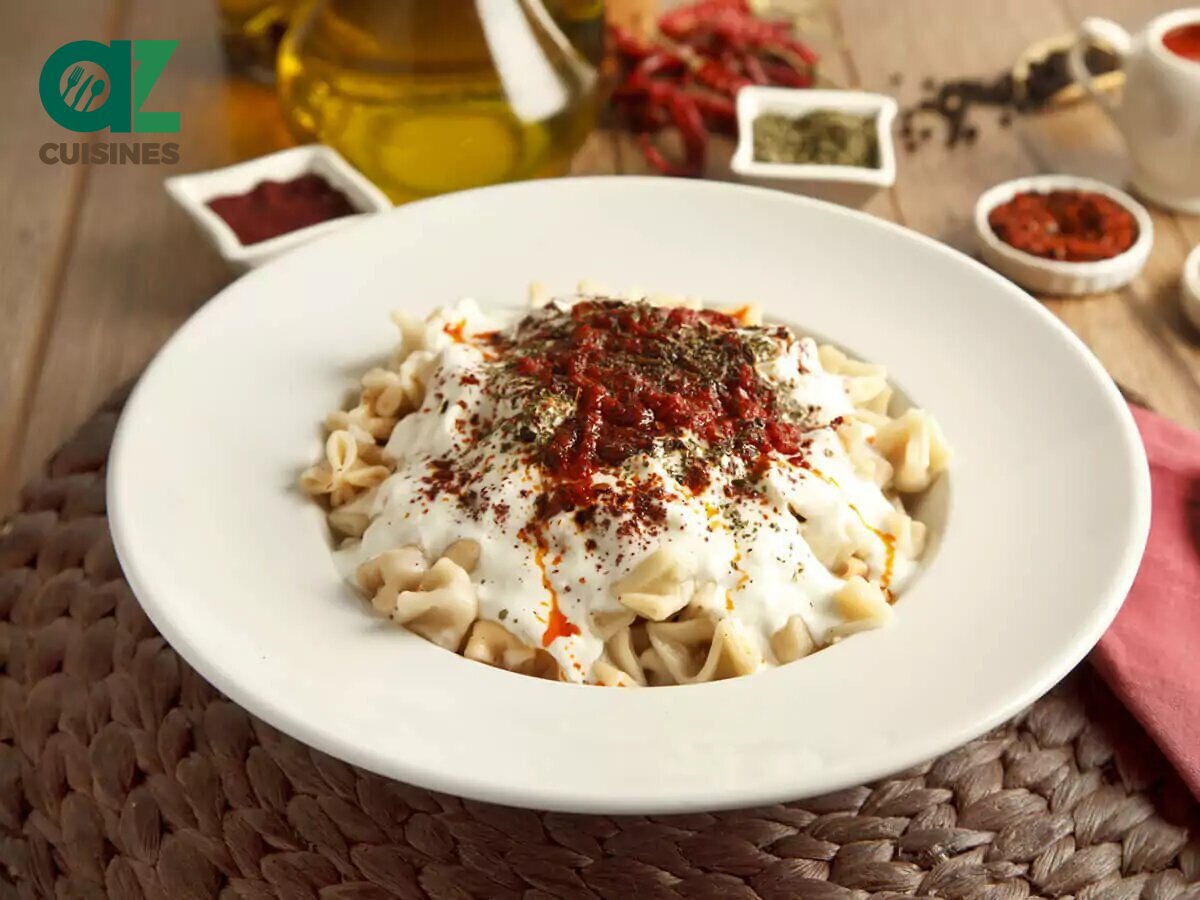
Manti
Origin: Central Asian, Turkish, Armenian
Main Ingredients: Lamb, beef, horse, vegetables (cabbage, potato)
Cooking Methods: Steamed, boiled, baked
Sauces/Accompaniments: Yogurt, garlic, butter, sour cream
Popularity: Popular in specific regions, often with specific traditional fillings
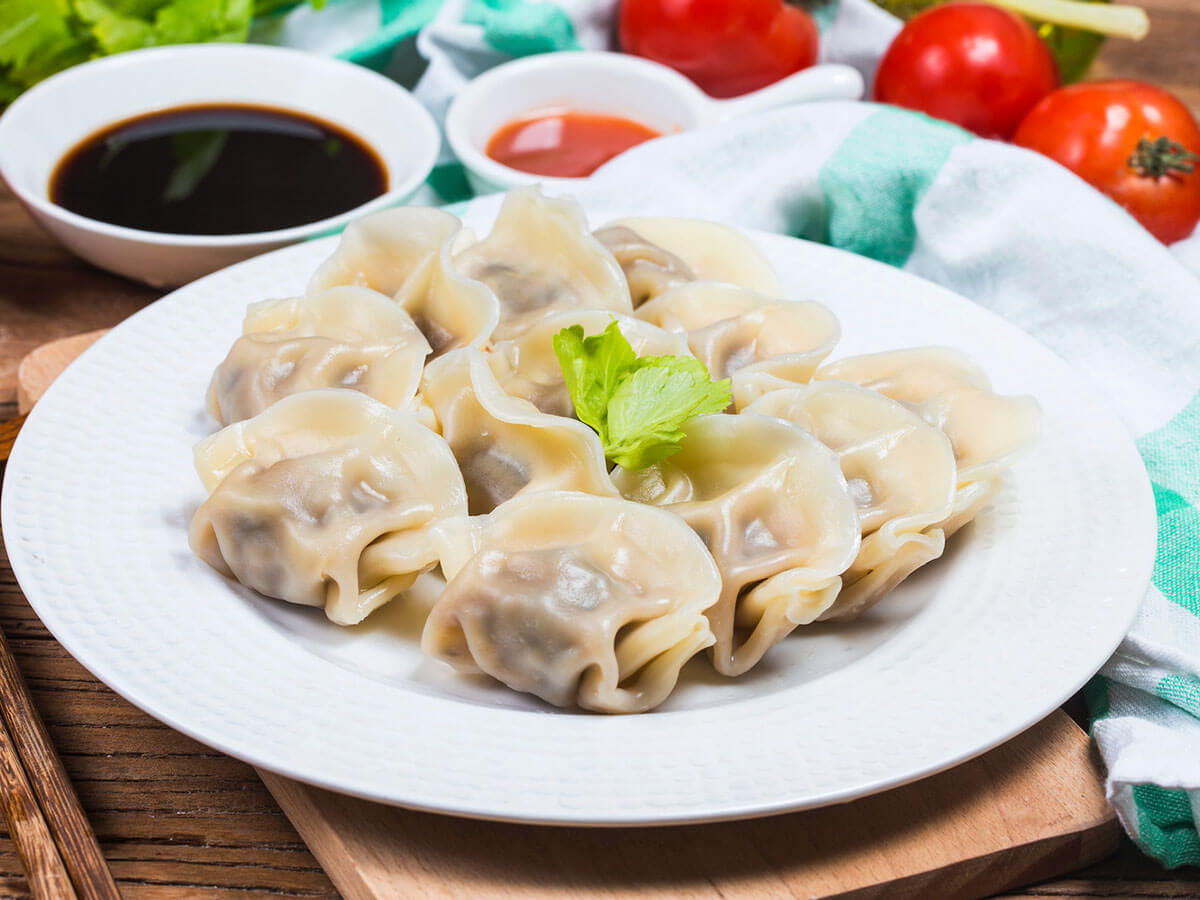
Dumplings
Origin: Various cuisines in the world
Main Ingredients: Cooked dough (bread-based, flour-based, potato-based) with fillings (meat, vegetables, etc.)
Cooking Methods: Boiled, simmered, steamed, fried
Sauces/Accompaniments: Varies by cuisine
Popularity: Broad category found worldwide, with a wide range of fillings and preparation methods
Having explored both manti and dumplings, let’s now explore more about manti with some commonly asked questions about it


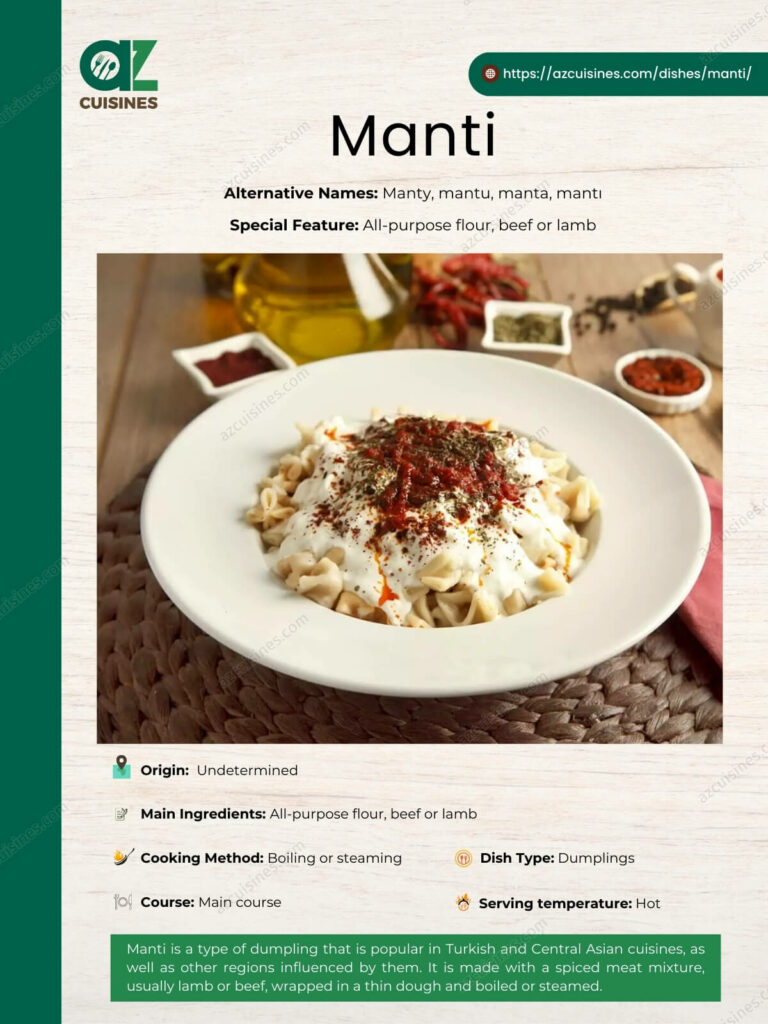
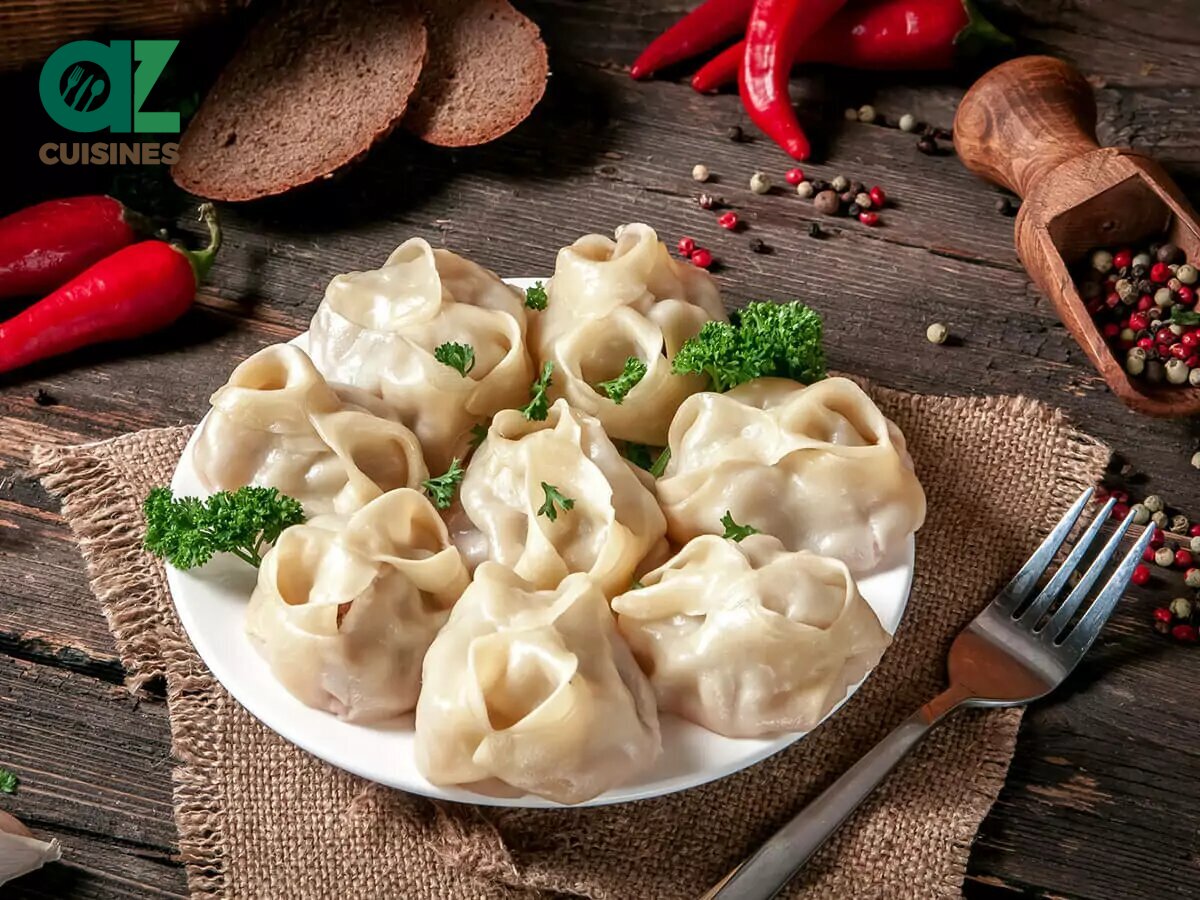
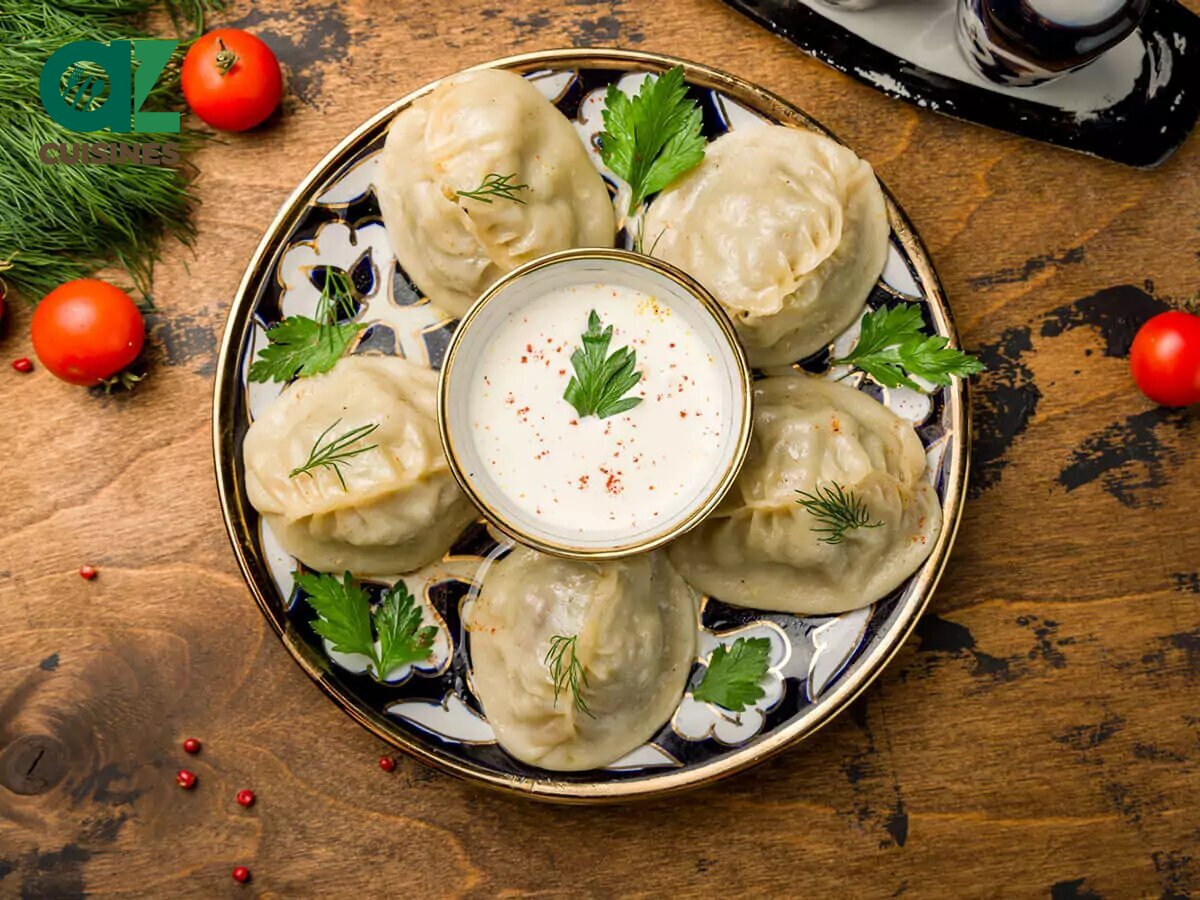
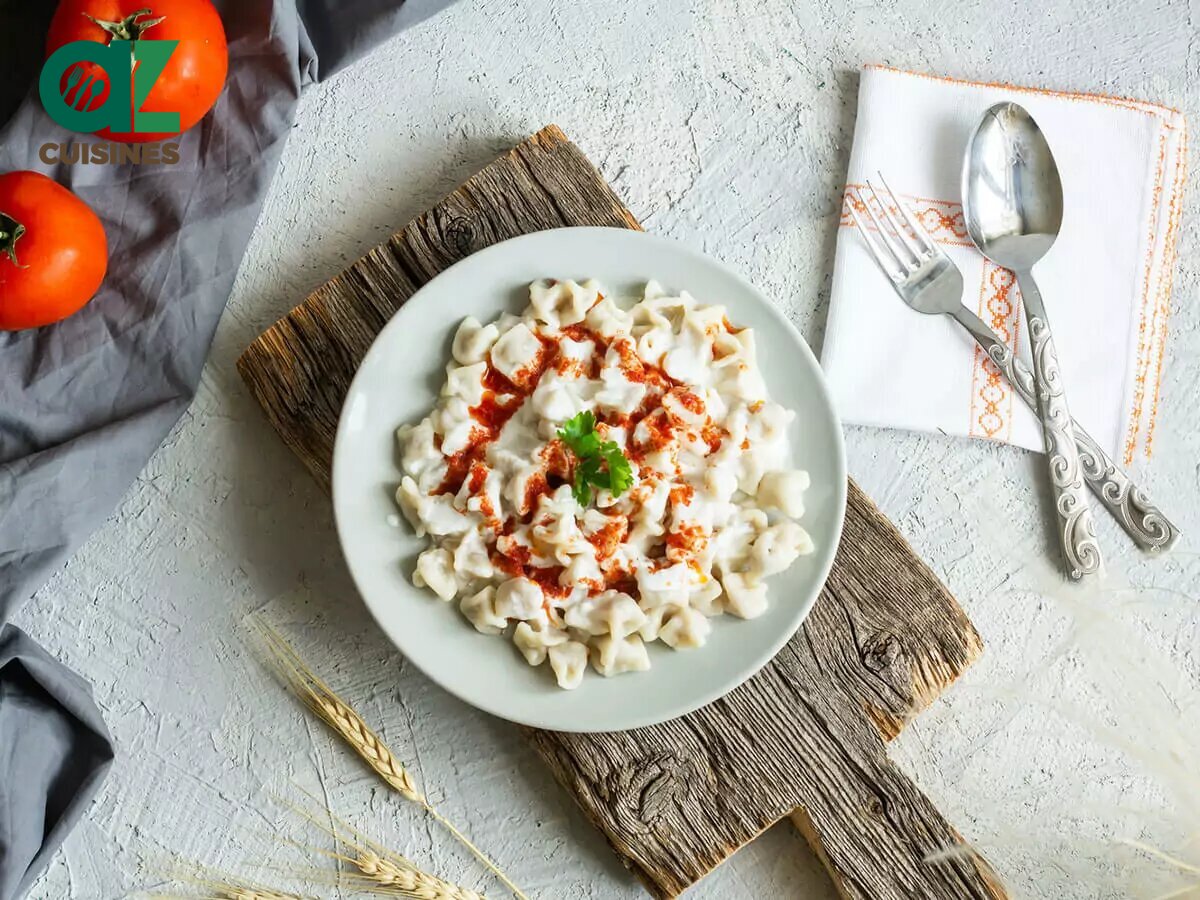
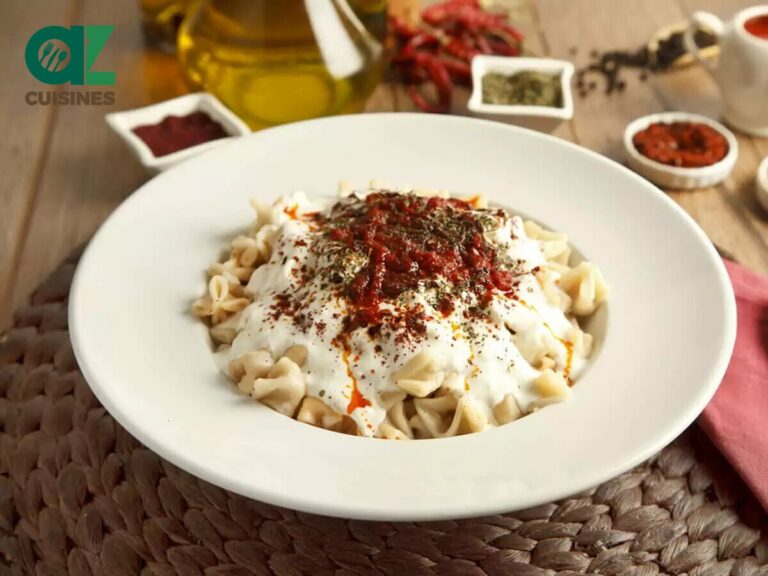


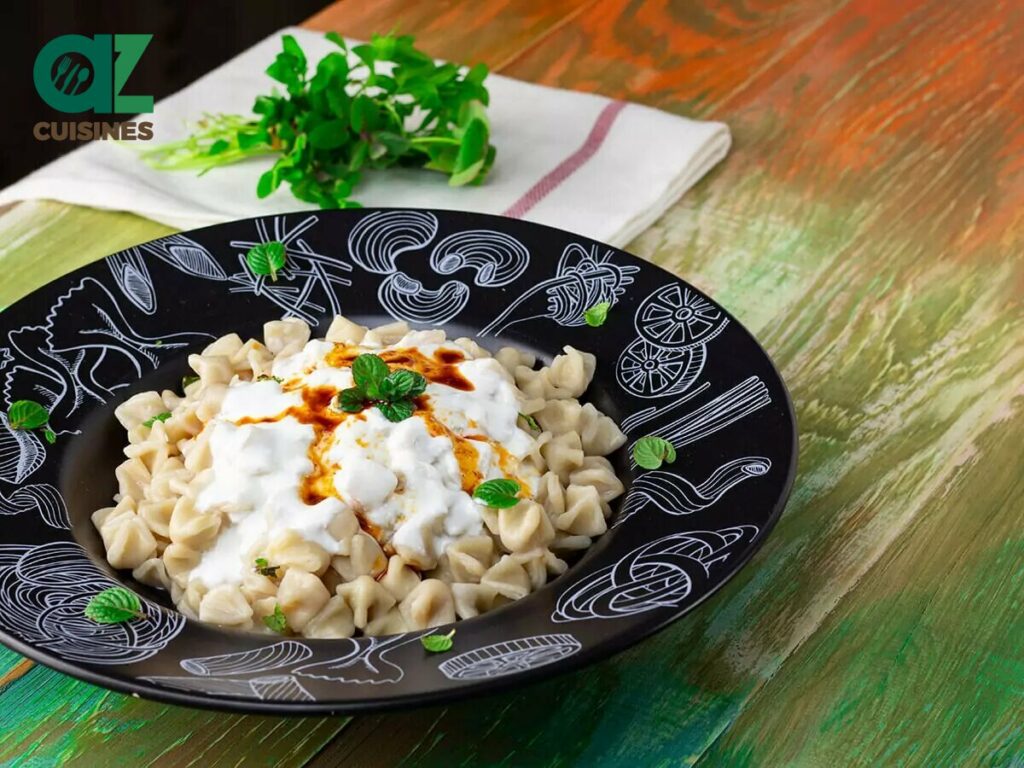
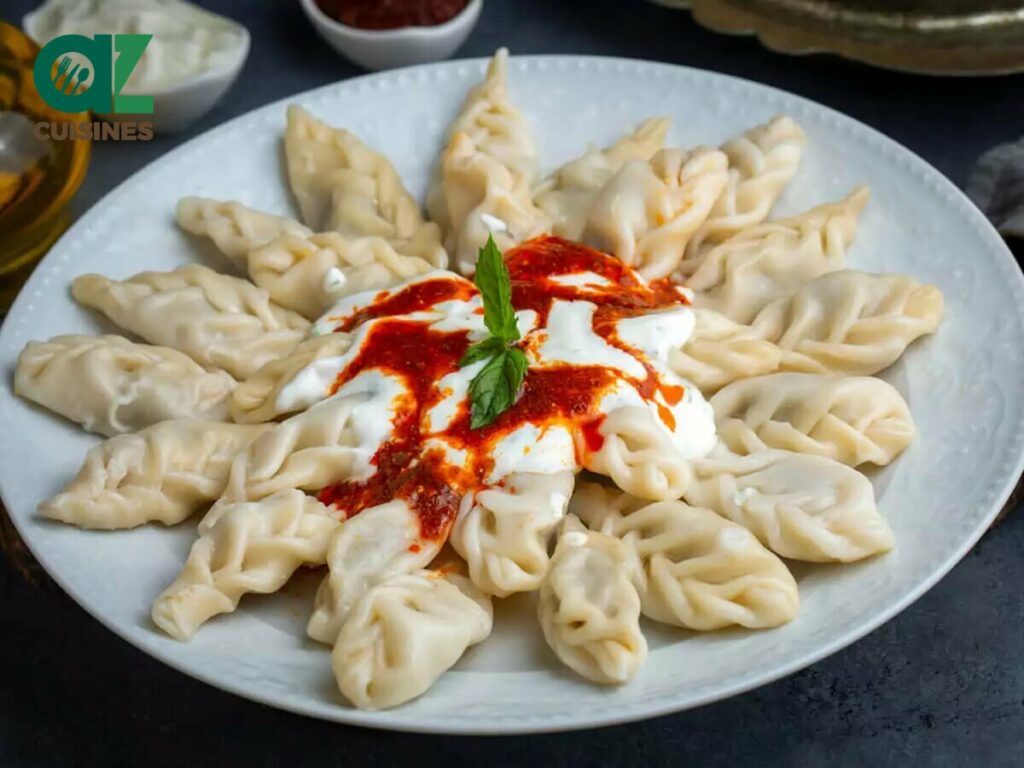

Adam Sam
Senior Food and Drink Editor
Expertise
Food Writer & Recipe Developer, Recipe Tester, Bartender, Cooking-video Maker, Editor In Chief
Education
Adam Sam, an experienced food writer and recipe developer, is passionate about blending diverse culinary traditions, national dishes, and innovative beverages, showcasing his proficiency in both traditional and modern recipe testing.
As the Editor-in-Chief, he elevates culinary content from street food to fine dining, focusing on Western cuisine and types of drinks at azcuisines.com, and is professional in creating engaging cooking videos that simplify complex dishes and ingredients.
His passion for food is evident in his writing, where he uniquely merges various cultures, traditions, and contemporary trends, skillfully combining classic recipes with modern cooking methods.